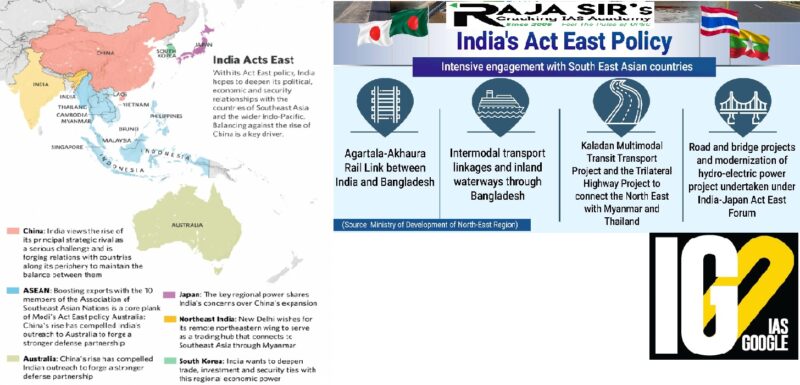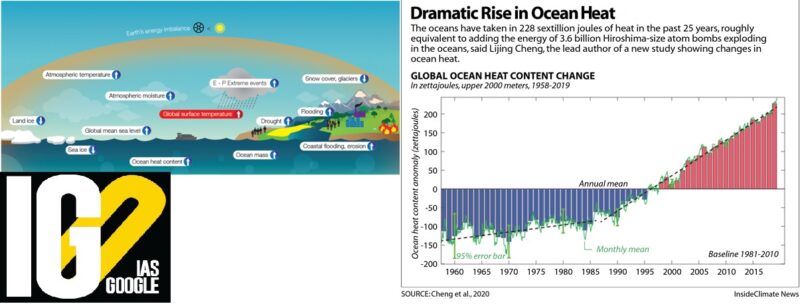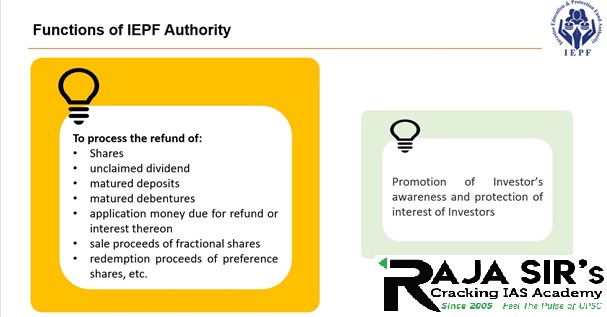- Home
- Prelims
- Mains
- Current Affairs
- Study Materials
- Test Series
Jan 15, 2022
INDIA-SOUTH KOREA BILATERAL TRADE
Recently, Trade talks between India and South Korea is held.
 Highlights
Highlights
 Highlights of the Report:
Highlights of the Report:

 Forest Cover:
Forest Cover:
 Investor Education and Protection Fund Authority (IEPFA):
Investor Education and Protection Fund Authority (IEPFA):
 Highlights of the talk:
Moscow’s demands were rejected
Highlights of the talk:
Moscow’s demands were rejected



 Highlights
Highlights
- India and South Korea set a bilateral trade target of $50 billion before 2030.
- India is aiming to address issues of market access and non-tariff barriers faced by Indian exporters.
- Indian exporters are facing difficulty in export of bovine meat.
- India had also raised the need to expedite the process to facilitate export of grapes, pomegranate arils and eggplants.
- Both countries agreed to impart fresh momentum to the discussions on the Comprehensive Economic Cooperation Agreement (CEPA) upgradation negotiations.
- Bilateral consular relations were established in 1962 which was upgraded to Ambassador level in 1973.
- RoK's open market policies and the New Southern Policy found resonance with India's economic liberalization, 'Look East Policy' as well as “Act East Policy”.
- In 2015, bilateral relationship was upgraded to ‘Special Strategic Partnership’.
- The India-South Korea CEPA was signed in 2009 and became effective in 2010.
- Major items of India’s exports to Korea are mineral fuels/oil distillates (mainly naphtha), cereals, iron and steel.
- Korea’s main export items are automobile parts, telecommunication equipment, hot rolled iron products, petroleum refined products etc.
- India and South Korea launched an initiative ‘Korea Plus’, to promote and facilitate Korean Investments in India.
- A Korea India SME and Startup centre was launched in September 2019.
- Indian Cultural Centre (ICC) was established in Seoul (2011) and Busan (2013).
- Various Universities in Korea offer degree courses in Indian Philosophy, Yoga and Ayurveda.
- Government of India granted Visa on Arrival facility to Korean nationals coming through 6 designated international airports in India since 1 October 2018.
 Highlights of the Report:
Highlights of the Report:
- Oceans have been experiencing an unambiguous increase in heat since the late 1980s.
- The warming rates in 1986-2021 represents a maximum eight-fold increase compared to 1958–85.
- The upper 2,000 metres of the ocean absorbed 235 zettajoules (ZJ) of heat in 2021 relative to the 1981-2010 average.
- Joule is a unit of work or energy in the International System of Units (SI).
- It is equal to the work done by a force of one newton acting through one metre.
- Zettajoule is a unit of energy equal to the work done when a force of one newton acts through a distance of one meter.
- The oceans soaked up 14 ZJ more heat than in 2020.
- There is an energy imbalance from the build-up of carbon dioxide and other greenhouse gases.
- The oceans are absorbing most of the heating from human carbon emissions.
- The heating will continue until the world reach net-zero carbon emissions.
- The effects of natural variations such as El Nino and La Nina cause warming and cooling global climate patterns, respectively.
- During El Nino, Oceans release some amount of heat, contributing to a mini global warming.
- The warmest years in terms of surface temperature are El Nino years.
- During La Nina, Oceans take up heat and bury it at depths away from the surface.
- Oceans stabilise Earth’s climate by absorbing large amounts of heat from sunlight, water vapour and other greenhouse gases.
- This heat can find its way back into the atmosphere through melting ice shelves, evaporating water or directly reheating the atmosphere.
- If the ocean absorbs more heat than it releases, its heat content rises.
- Marine fishes, seabirds and marine mammals face high risks from increasing temperatures
- It leads to high levels of mortalities, loss of breeding grounds and mass movements.
- Coral reefs are also affected which cause coral bleaching and increase their risk of mortality.
- Marine, freshwater capture fisheries and aquaculture provide 4.3 billion people with about 15% of their animal protein.
- By increasing the vulnerability of fish species to diseases, ocean warming is a serious risk to food security and people’s livelihoods globally.
- Economic losses vary from ten to hundreds of millions of dollars.
- It also affects vegetation and reef-building species such as corals and mangroves, which protect coastlines from erosion and sea-level rise.
- Rising sea levels and erosion particularly affect low-lying island countries in the Pacific Ocean, forcing people to relocate.
- Rise in sea surface temperatures is causing more severe hurricanes and the intensification of El Nino events bringing droughts and floods.
- This can have significant socio-economic and health effects in some regions of the world.
- Warming ocean temperatures are linked to the increase of diseases in marine species.
- Human’s risk direct transmission of these diseases when consuming marine species.

- These are small data centres located at the edge of the network, where they are closer to end users and devices.
 Forest Cover:
Forest Cover:
- The total forest and tree cover of the country is 62% of the geographical area of the country.
- Forest Cover forms 71% of the country’s geographical area.
- Increase in forest cover has been observed in open forest followed by very dense forest.
- Top three states showing increase in forest cover are:
- Andhra Pradesh followed by Telangana and Odisha.
- Area-wise: Madhya Pradesh has the largest forest cover in the country followed by Arunachal Pradesh, Chhattisgarh, Odisha and Maharashtra.
- In terms of forest cover as percentage of total geographical area, the top five States are:
- Mizoram (84.53%), Arunachal Pradesh (79.33%), Meghalaya (76.00%), Manipur (74.34%) and Nagaland (73.90%).
- Five states in the Northeast– Arunachal Pradesh, Manipur, Meghalaya, Mizoram and Nagaland have all shown loss in forest cover.
- 46 %of the forest cover is prone to forest fires.
- Out of this, 2.81 % is extremely prone, 7.85% is very highly prone and 11.51 % is highly prone.
- There is a decline of 1,582 sq km in moderately dense forests, or “natural forests”.
- The report, for the first time, assessed forest cover in tiger reserves, tiger corridors and the Gir forest which houses the Asiatic lion.
- The forest cover in tiger corridors has increased by 37.15 sq km (0.32%) between 2011-2021, but decreased by 22.6 sq km (0.04%) in tiger reserves.
- Forest cover has increased in 20 tiger reserves in these 10 years, and decreased in 32 reserves.
- Buxa, Anamalai and Indravati reserves have shown an increase in forest cover.
- The highest losses have been found in Kawal, Bhadra and the Sunderbans reserves.
- Pakke Tiger Reserve in Arunachal Pradesh has the highest forest cover, at nearly 97%.
- A special study for estimation of Above Ground Biomass (AGB)at pan-India level was introduced in ISFR 2021.
- Total mangrove cover in the country increased by 17 sq Km as compared to the previous assessment of 2019.
- Top three states showing mangrove cover increase are Odisha (8 sq km) followed by Maharashtra (4 sq km) and Karnataka (3 sq km).
- There is an increase of 79.4 million tonnes in the carbon stock of country as compared to the last assessment of 2019.
- The annual increase in the carbon stock is 39.7 million tonnes.
- Forest cover includes all areas more than 1 hectare in extent and has the tree density of more than 10%, irrespective of land use and legal status.
- Trees outside the recorded forest area mainly in the form of block, linear and scattered size of patches are included in Trees outside Forest (TOF).
- Tree cover is an estimated area comprising of tree patches, which are less than one hectare and isolated trees outside the recorded forests.
- Thus, trees included in the tree cover constitute only a part of TOF.
- It is an assessment of India’s forest and tree cover.
- It is published every two years by the Forest Survey of India under the Ministry of Environment, Forests and Climate Change.
- The first survey was published in 1987, and ISFR 2021 is the 17th.
- The assessment of forest cover of the country is done using mid-resolution Satellite databased on interpretation of LISS-III data from Indian Remote Sensing satellite data (Resourcesat-II).
- Linear Imaging Self-Scanning Sensor 3- LISS III is a remote sensing satellite camera from Indian Space Research Organization.
- The survey is based on these four categories of forests:
- Very Dense Forest (with tree canopy density of 70 per cent or above)
- Moderately Dense Forest (tree canopy density between 40 and 70 per cent)
- Open Forest (tree canopy density between 10 and 40 per cent)
- Scrub (tree canopy density less than 10 per cent).
- Open forests currently have the biggest share in the country’s forest cover.
- Very dense forests (the pristine natural forests) account for least forest cover.
- The scheme is being implemented for afforestation of degraded forest lands.
- The scheme is implemented by three tier institutional setup through:
- State Forest Development Agency (SFDA) at the state level
- Forest Development Agency (FDA) at the forest division level
- Joint Forest Management Committees (JFMCs) at village level.
- To ecologically restore degraded forests
- To develop the forest resources with peoples’ participation, with focus on improvement in livelihoods of the forest-fringe communities, especially the poor.
- To support and accelerate the on-going process of devolving forest conservation, protection, management and development functions.
- It is one of the eight Missions under the National Action Plan on Climate Change (NAPCC).
- To safeguard the biological resources and associated livelihoods against adverse climate change and to recognize the vital impact of forestry on ecological sustainability, biodiversity conservation and food-, water- and livelihood-security.
- It was prepared in 2001 to take appropriate action in addressing the problems of desertification.
 Investor Education and Protection Fund Authority (IEPFA):
Investor Education and Protection Fund Authority (IEPFA):
- Established in 2016, IEPFA is under the aegis of the Ministry of Corporate Affairs.
- It works for investor awareness and promotion of the interest of investors.
- It is also responsible for the administration of the Investor Education Protection Fund (IEPF).
- IEPF is established under the Companies Act, 1956 by way of the Companies (Amendment) Act, 1999.
 Highlights of the talk:
Moscow’s demands were rejected
Highlights of the talk:
Moscow’s demands were rejected
- Russia’s demands include not admitting any more members into NATO and to withdraw western forces from its Eastern Allies.
- But both the demands were rejected by U.S and its allies.
- Russia has been deploying security forces around Ukraine, creating invasion scare among the allies.
- The US and its allies rejected Russia’s demands of easing tensions over Ukraine.
- Russia also demanded that Ukraine should not be added into the NATO, a request denied by the allies.
- NATO allies proposed a number of areas where dialogue with Russia could continue.
- It includes increasing the transparency of military exercises, reducing space and cyber threats, and addressing arms control and non-proliferation.
- The NATO-Russia Council (NRC) was established as a mechanism for consultation, consensus-building, cooperation, joint decision and joint action.
- It includes fighting terrorism, military cooperation, cooperation on Afghanistan (including transportation by Russia of non-military International Security Assistance Force freight, fighting the local drug production, industrial cooperation, and weapons non-proliferation.
- The NRC was established at the NATO-Russia Summit in Rome on 28 May 2002 by the Declaration on “NATO-Russia Relations: a New Quality”.
- The NRC replaced the Permanent Joint Council (PJC), a forum for consultation and cooperation created by the 1997 NATO-Russia Founding Act.
- The Alliance suspended all practical cooperation between NATO and Russia.
- Reason: Russia’s illegal military intervention in Ukraine and its violation of Ukraine’s sovereignty and territorial integrity.
- It is an intergovernmental military alliance between 27 European countries, 2 North American countries, and 1 Eurasian country.
- It was founded in 1949by the United States, Canada, and several Western European nations to provide collective security against the Soviet Union.
- Headquarters: Brussels, Belgium
- NATO constitutes a system of collective security, whereby its independent member states agree to mutual defense in response to an attack by any external party.
- NATO is traditionally focused on Russia and the European neighbourhood.
- It recognises the need to deter revisionist and militarily advanced Russia, and the threat posed by rogue nations such as North Korea.
- The Soviet Union formed its own defence and political alliance with Eastern European nations as a counterbalance to NATO-The Warsaw Pact.
- The Warsaw Pact was signed in 1955.
- This alliance was disbanded after the dissolution of the Union of Soviet Socialist Republics (USSR) in 1991.
- Project entails the development, financing, construction, and operation of the
- 400kV Lessos – Loosuk and 220kV Kisumu – Musaga transmission lines under a public-private partnership (PPP) framework.
- Africa-50 is a pan-African infrastructure investment platform that contributes to Africa’s economic growth by developing and investing in bankable infrastructure projects.

- It is the robotic lunar rover component of China Chang'e 4 mission to the Moon.
- It entered lunar orbit before making the world's first soft landing on the far side of the Moon.
- Yutu-2 is currently operational as the world's most long-lived lunar rover by far and the world's first lunar rover traversing the far side of the moon.

- The Challenge was launched in collaboration with Indian Space Research Organisation (ISRO) and Central Board of Secondary Education (CBSE).
- Aim: To enable innovation among young school students to create something in space sector that will help them learn about the space & create something that space programme can use itself.
- It aligns with the World Space Week 2021 which is observed from 4th -10th October each year.

- The policy was adopted in the December 2021.
- A just and peaceful resolution of the Jammu and Kashmir dispute remains at the core of India- Pakistan bilateral relationship.
- The rise of Hindutva-driven politics in India is deeply concerning and impacts Pakistan’s immediate security.
- Special attention is required to manage border disputes which continue to pose security threats, particularly along the Line of Control (LoC).
- Towards the immediate east bilateral ties have also been hindered as a consequence of the unresolved Kashmir dispute.
- Expansion of India's nuclear triad disturb the strategic balance in the region.
- It also blames India for “ceasefire violations” along the LoC.
- Exploitation and manipulation of ethnic, religious, and sectarian lines through violent extremist ideologies” cannot be allowed.
- China Pakistan Economic Corridor as a “project of national importance”, is “redefining regional connectivity and providing impetus to Pakistan’s economy”.
- However, document doesn’t talk much about West Asia and Pakistan’s partners in the Gulf, and Turkey and Saudi Arabia.
- Document indicated that “westward connectivity” was the current viable option as “eastward connectivity is held hostage to India’s regressive approach”.









 Latest News
Latest News
 General Studies
General Studies